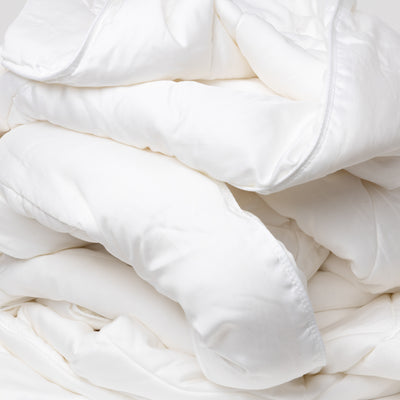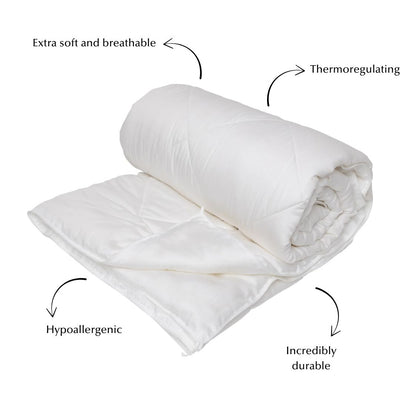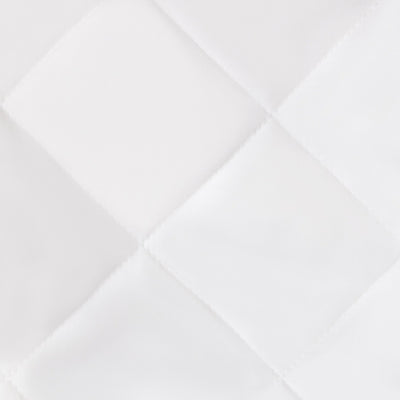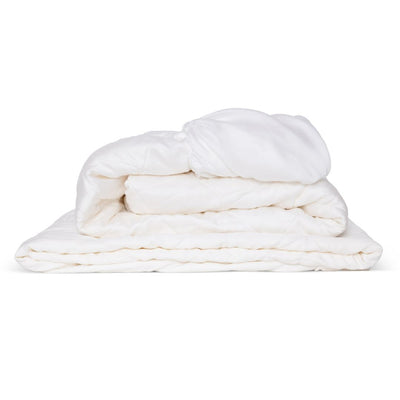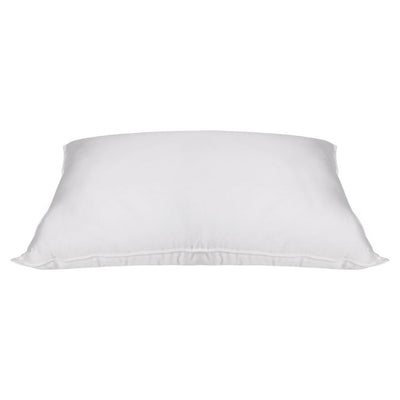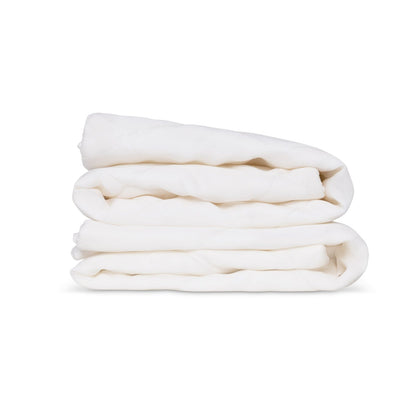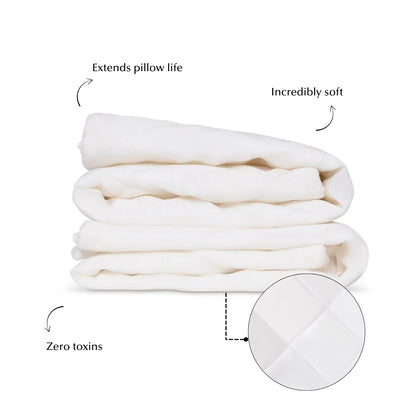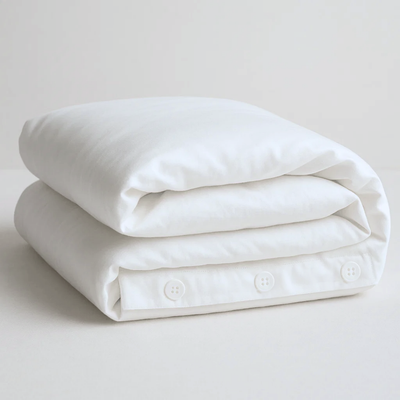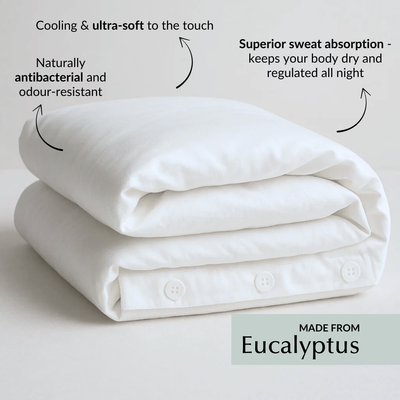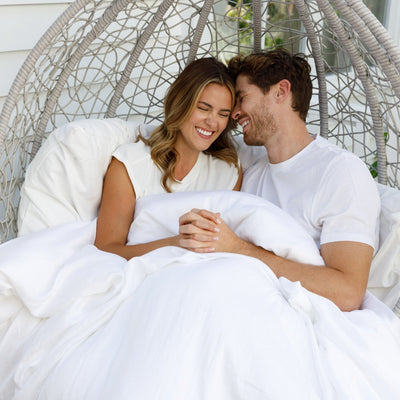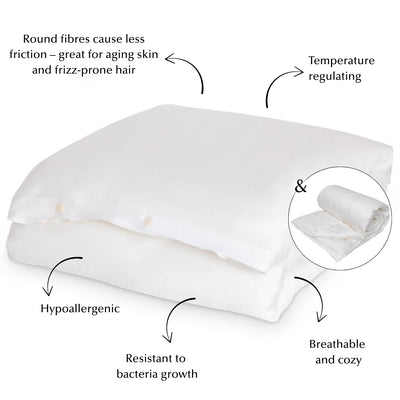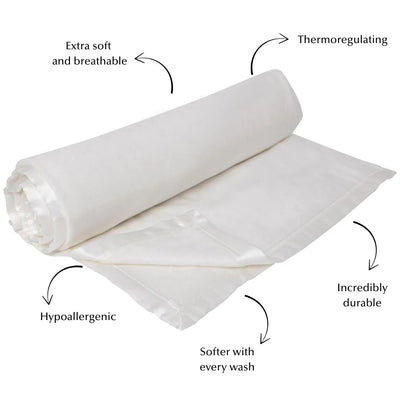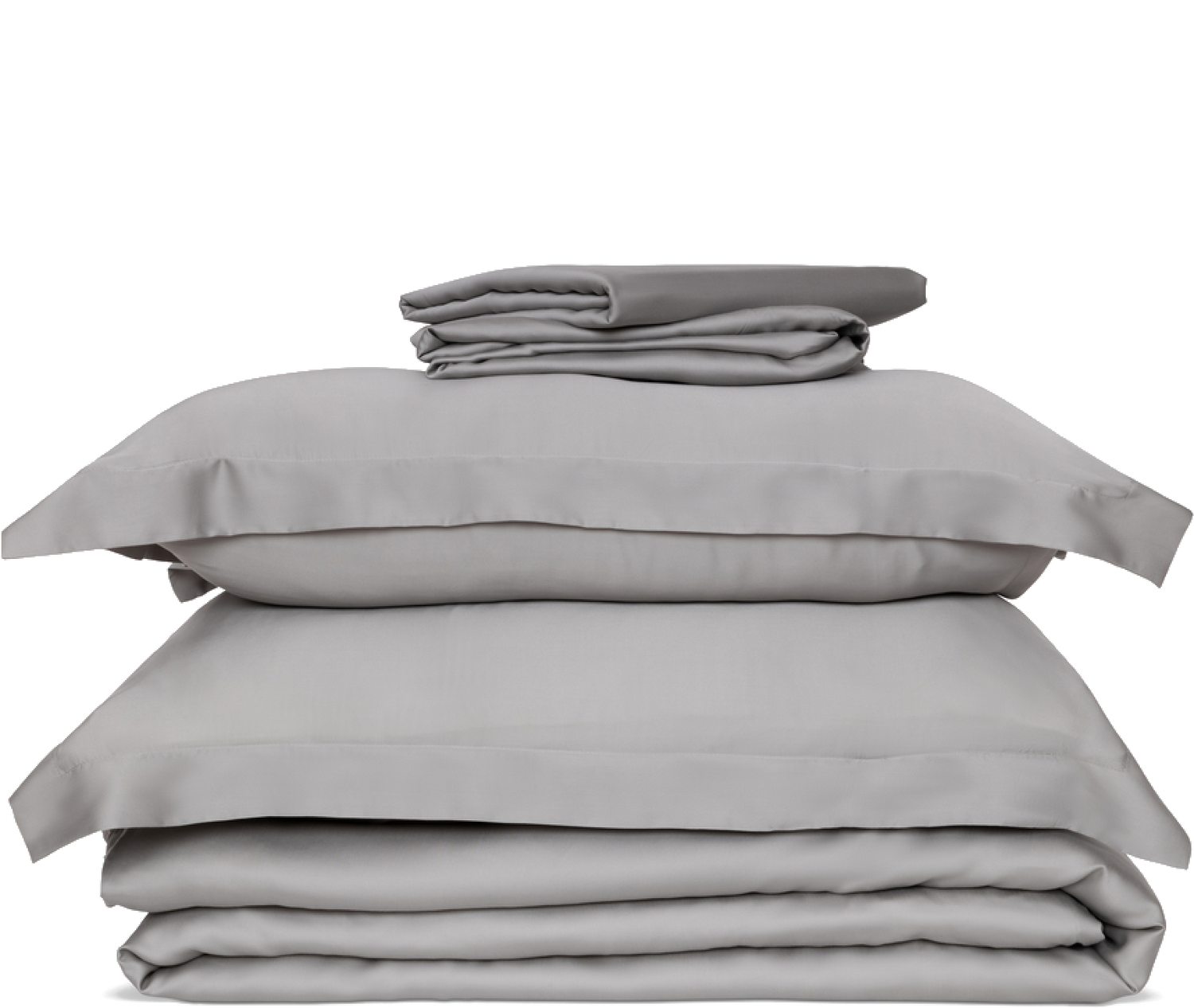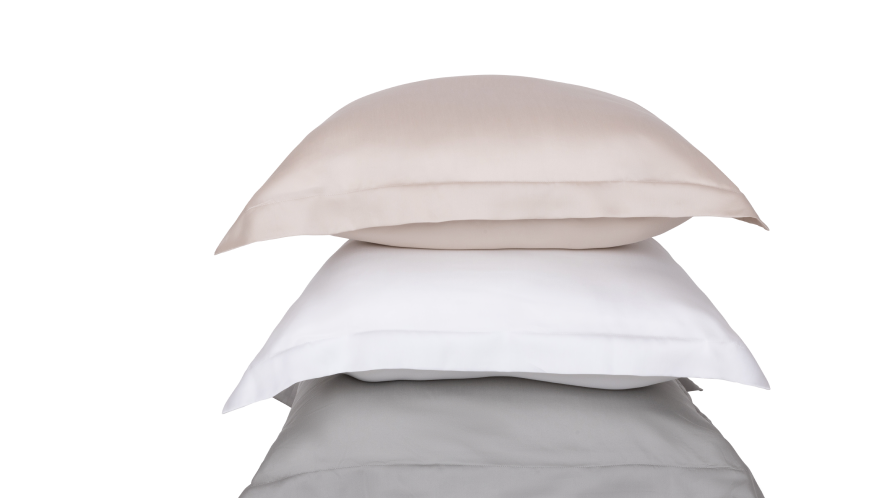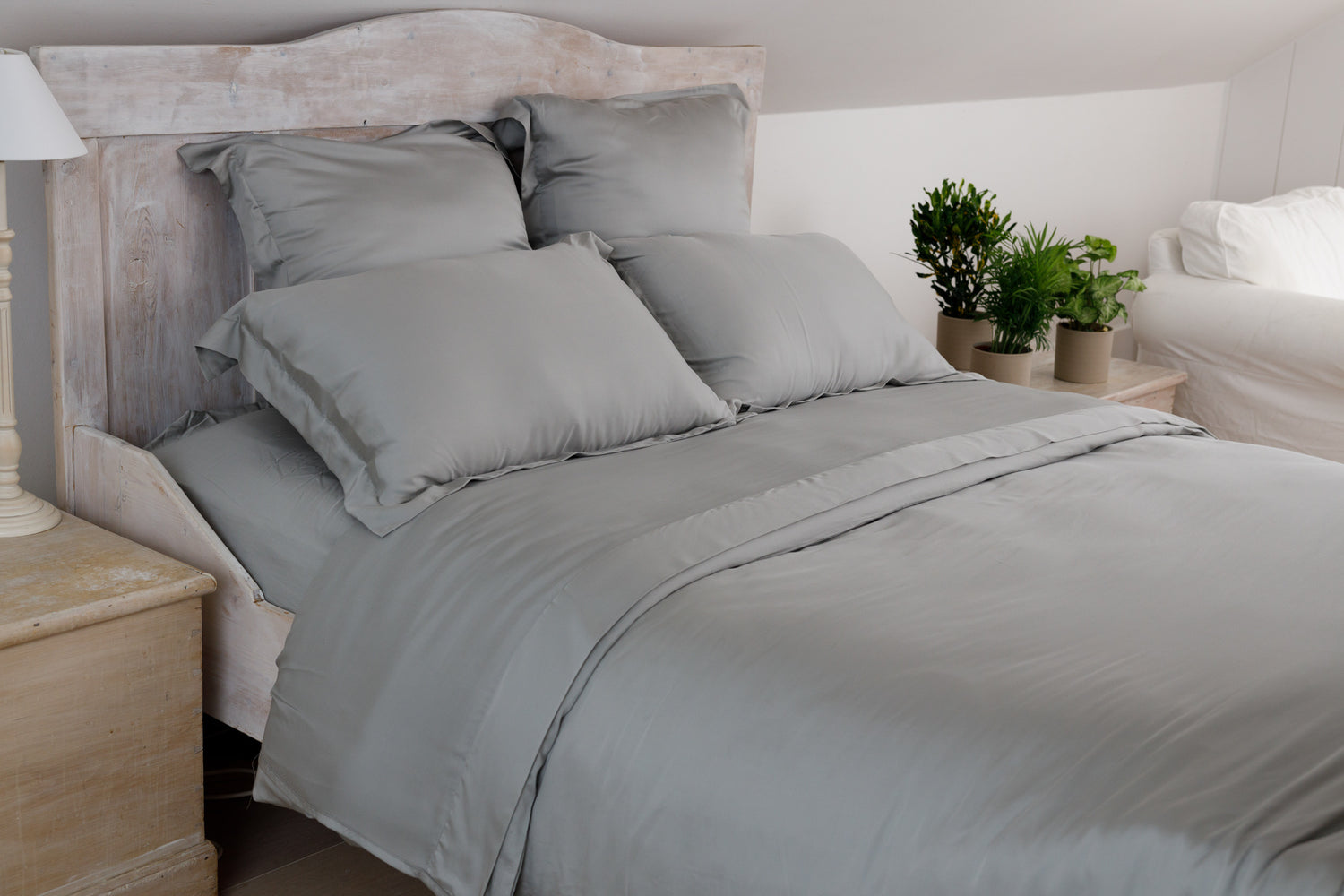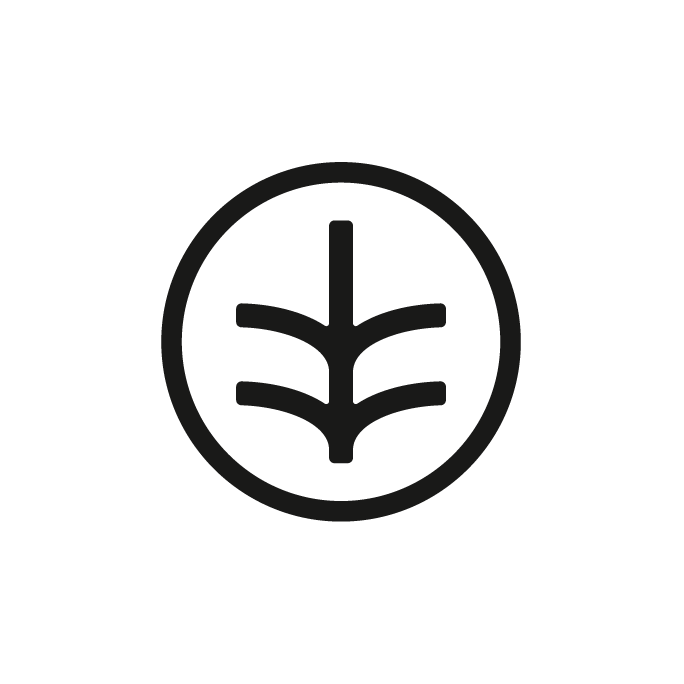Silk is known as the “Queen of Textiles” and is famous for its unique qualities like luxury, elegance, class and comfort.
Silk, the only natural fibre found in filament form, is produced by the mulberry silkworm, or Bombyx mori.
Other animals which can produce silk are spiders, scorpions, mites and fleas.
Chemically, silk consists of proteins. The silkworms feed on specific plants like mulberry trees and spin cocoons as a protective shell with silk fibre.
Silkworms have four stages in their lifecycle; egg, caterpillar, pupa, and moth. Silk is manufactured by extracting the fabric at the pupa stage, while the silkworms are still in the cocoon.
The incredibly strong fibres are then used to weave the luxurious and popular fabric that we now know today.
Silk fibres are very fine, about 10 nanometres (1/2500th of an inch) in diameter and have much lower density compared to cotton, wool or nylon.
It is a highly versatile fabric, silk has proven to be ideal for a variety of uses – from formal wear and sleepwear, parachutes and rugs, to medical sutures and prosthetic arteries.
This article will tell you all you need to know about this ancient, luxe fabric, including:
1. History of Silk
2. Types of silk
3. Why use silk?
4. Why to use silk in bedding?
5. How to shop for duvet cover?
6. Silk duvet cover
7. Mulberry silk duvet cover
8. How to wash a silk duvet cover?
9. Mistakes to avoid when buying silk
10. Ethical Silk or Peace silk or Ahimsa Silk
11. Ethical silk company UK
12. Silk types according to its purpose
The History of Silk

Silk was discovered accidentally in 2640 BC by a Chinese empress Hsi Ling Shi. It is known that the empress was sipping tea under a mulberry tree when a cocoon of Bombyx mori silkworm fell into her cup.
Since the tea was hot, the cocoon began to loosen the threads. The empress soon developed sericulture (cultivation of silkworms), and invented the reel and loom.
Upon encouragement of her husband, the third emperor of China, she examined the silkworms and tested the feasibility of using the thread from cocoons.
She collected large numbers of worms, fed them herself and discovered how to reel the silk and make it into garments. Chinese records say that since then, she has been known as the “Goddess of Silkworms.”
China soon started to trade silk to the rulers of the West but the secret of silk processing was not revealed by the Chinese for 2,500 years.
Few Chinese immigrants settled in Korea helped the country to have its own silk industry. Sericulture then spread into India, Japan, and Persia, making silk a part of the history of these cultures.
And of course, there is the famous Silk Road, the pre-industrial network of ancient trade routes that linked China to Western Europe.
Merchants from the West came with fruits, weapons, glassware and horses, while from those from the East came spices, dyes, and most importantly, silk.
Not only was the Silk Road used for trade, it also offered a myriad of opportunities to exchange culture and ideas.
From India came Buddhism, and they brought it to China, then on to Japan and Korea.
Christian missionaries came from the West, bringing Christianity to Asia.
Explorers like Marco Polo frequently used the Silk Road.
The Silk Road was the single most important trade route on the map until the Ottoman Empire abolished trade with the West and shut down the routes.
The Chinese had a monopoly on the silk trade for hundreds of years until Korea and India caught on and developed their own silk production process.
To this day, the sericulture process remains relatively unchanged. Silkworm larvae that eat mulberry leaves are left to spin their cocoons.
After a few days, the cocoons are boiled, unfortunately, killing the pupae.
The silk filament is then extracted from the cocoon. The individual fibers are then woven into a fabric.
The animal cost is high, it takes approximately 2,500 silkworms to produce a pound of silk. Each cocoon contains a mile of filament, and a single thread of silk is made up of multiple filaments.
Spider Silk
Spiders are another source of silk. Spider silk is known to be stronger and more elastic, but spiders cannot be mass farmed.
Spiders are challenging to farm because they require massive amounts of space for their webs, and they tend to eat each other.
In addition, individual spiders do not produce high enough quantities of silk to justify their upkeep.
Spiders produce dragline silk, the pattern that is used in their webs. It is reputed to have strength greater than steel or Kevlar.
It is non-toxic and has antibacterial properties. If we could somehow develop their natural gifts and apply it to our technology, it could change our way of living.
We could produce safety equipment, unbreakable cases, and medical sutures.
We have tried to replicate the spider’s silk by advancing our understanding of dragline silk. However, the mass production of spider’s silk has proven exceptionally challenging.
We cannot hope to understand the spider’s instinctive spinning processes and the effect of the surrounding environment on it.
The spiders spin their dragline silk because of a gland called the major ampullate gland. The longest and most intricate of all the glands, it is visible from the tail, duct, and sac region.
The silk is made up of proteins called spidroins. Spidroins are secreted into the tail, where it is stored in a sac called “dope”. Dope is a concentrated liquid crystalline solution.
So while spider silk is rare, mulberry silkworm silk corners the market.
Today, silk remains one of the most popular fabrics prized for its smooth, luxurious feel, thus the terms “soft as silk” and “silky smooth”.
The silk industry is currently valued at US$21.45 billion, with China still the leading producer and India a distant second. Other top producers include Uzbekistan, Thailand, Brazil, and Vietnam.
Types of silk
Silk is divided into two main types:
Mulberry Silk or Cultivated Silk
Mulberry silk is also known as cultivated silk and Bombyx silk, though mulberry silk is the most commonly used term.
Bombyx mori, the mulberry silkworm feeds on mulberry leaves. It is also sometimes referred to by type, and called either thrown or reeled silk.
The entire production process is carefully monitored with the silkworms kept at optimal temperature. Mulberry silk fibres are incredibly durable, stronger than steel fibres of the same diameter.
Mulberry silk is the most widely produced type and is considered to be superior in quality as compared to other varieties.
Non-Mulberry Silk
A large number of species (400–500) are used in the production of non-mulberry silks, but only about 80 have been commercially used in Asia and Africa, mainly by tribal communities.
Non-mulberry silks are chiefly of three types, namely -
Eri silk - The name Eri is derived from the Assamese (Assam, India) word “Era” meaning Castor oil plant, which is the main food of eri silkworm. It originated in India and the silkworm, Philosamia ricini, feeds on the foliage of castor is also called Erunda or Endi.
Apart from the economic importance of Eri silk, the pupae are consumed. Sericulture is a household activity practised mainly for protein-rich pupae, a delicacy of the Assam tribals.
Eri is a multivoltine silk spun from open-ended cocoons, unlike other varieties of silk.
Tasar or Tussah silk - It is copperish coloured, coarse silk mainly used for furnishings and interiors. It is less lustrous than mulberry silk, but has its own feel and appeal.
Tasar silkworm, Antheraea mylitta, mainly thrives on the food plants Asan and Arjun.
This fabric is cooler than other varieties of silk. The presence of pores has made them more breathable, offering more comfort in hot climates.
These silkworms live in wild forests in South Asia, hence, Tussar silk is known as the “wild silk”.
It is usually tribal communities that tend to the oak or jamun trees and cocoons this is why the tasar silk is naturally creamy beige in colour. Due to the wild nature of the feed, this silk usually varies in hue.
Muga silk- Muga silkworm, Antheraea assama is unique in secreting an unusual golden yellow coloured lustrous silk. This is a species of silkworm that is reared only in Assam, India and this silk is known for its high durability.
The popular name ‘Muga” is an Assamese word which indicates the brown colour of the cocoon.
Muga is known for its extreme durability. It has a natural yellowish-golden tint with a shimmering texture. It is only produced in Assam, India. The word “Muga” means yellowish in Assamese.
There are over 30 different types of artificial silk fabrics, with these being the most common:
Charmeuse - Woven with a satin weave, Charmeuse is a soft lightweight fabric with a nice drape to it. Charmeuse has a lustrous shine on one side and a dull matte finish on the other.
Chiffon - A sheer, elegant fabric with a slightly rough texture. Made from fine twisted fibres, Chiffon silk is a very lightweight fabric with a slight stretch to it. Because of its extremely light weight and feel, it is commonly used in scarves.
Dupion - Plainly and tightly woven, this double-thread silk has a crisp texture. Woven with different sized weft and warp threads produces a strong, durable fabric with a lustrous shine. An occasional black speck may run through the weave, this is part of the original cocoon of the silkworm.
Georgette - Made with highly twisted yarns, Georgette is a sheer, lightweight , fabric with a coarse texture.
Habotai - Soft and lightweight, Habotai is a plain-weave fabric with a smooth, glossy finish. This silk is commonly used in Japan for kimonos.
Velvet - A luxurious, medium-to-heavy-weight silk fabric made with multiple warps and wefts.
Organza - Sheer, fine and lightweight, Organza is an open-weave fabric with a smooth sheen.
Why use silk?
Silk is a natural product
Because silk is a natural product, it is skin-friendly and hygienic which allows it to promote a healthier sleep.
The antimicrobial properties of silk can ease symptoms of allergies, eczema, and other skin conditions.
Silk is known to be hypoallergenic with a dense molecular structure that helps keep dust mites and other allergens away.
In addition to skin conditions, the hypoallergenic properties of silk can help asthma, allergies, or other respiratory conditions.
As most of the allergens in the house are found in the bedroom, using silk bedding can help alleviate symptoms.
Silk production is of high quality
The process by which the silk strands are placed one on top of each other until the desired weight is achieved forms an intricate design which regulates heat during the night.
The silk grid allows for some heat to escape while still allowing you to remain warm and comfortable throughout your sleep.
Silk is not too warm, nor too cold
The benefit to owning a silk is that it is a natural fibre that does not conduct heat or static electricity. A silk either draw off heat and moisture from the body or retain heat if the temperature is cold.
Comfort and feel
The best reason for owning silk is that it feels luxurious in hand. It drapes excellently and has wonderful lustre.
Silk is low maintenance and biodegradable
The natural fibres in silk are mildew and mould resistant, making them much easier to maintain.
Silk causes less sweat which also means less body oils and bacterial growth end up on the fabric. This extends the durability of silk fabric. As well, silk is strong but lightweight which allows ease of handling.
And when it's finally time to retire the silk, they take about one to five years to decompose in landfills.
The textile industry is a significant contributor to global warming and greenhouse gas emissions. Decomposition of synthetic materials such as polyester and nylon releases methane, a harmful greenhouse gas that contributes to global warming.
Why to use silk in bedding?
Silk bedspreads and silk pillowcases are far superior to even the finest Egyptian cotton sheets – this is because:
Skin Care

Silk bedding can make an amazing difference to the appearance of your skin. Wrinkles appear smoother and there are no creases or marks from the pillowcase.
Silk is a fabric hence recommended by experts in the beauty industry. Silk does not absorb face creams like cotton can.
Instead it allows your night cream to work while you are asleep for maximum benefit and a more radiant, deeply moisturised complexion.
The long, smooth fibers of silk make it a natural anti-wrinkle product that can help reduce the appearance of fine lines and wrinkles.
Sleeping on silk pillowcases have been shown to visibly reduce the appearance of wrinkles and slow signs of ageing.
Hair care
The natural proteins present in silk together with its smoothness prevents hair from getting matted or dried out when you rest your head on silk overnight.
Sleeping on silk pillowcases or wrapping the hair in a silk scarf has also been shown to reduce tangles, moisturise the hair, and protect strands from breakage.
Cheap quality, coarse cotton is known to be responsible for breaking hair and causing hair loss.
That is why top models always insist on silk fabrics in bedding.
In addition, albumen is a chemical found naturally in silk, speeding up the skin’s metabolism and helping replace dead skin cells at a faster rate. Long-term use of silk has been proven to improve the skin’s health significantly.
The breathable properties of silk also allow moisture regulation and keep the skin hydrated through the night. In comparison, cotton and polyester are absorbent materials that remove moisture from the skin, leading to more wrinkles.
Easy Care
Silk pillowcases, sheets and duvet covers are easy to launder. They can be machine washed on the gentle or hand washable cycle of washing machine using a gentle, non-biological soap or a special silk detergent.
Washed in this way will give you years of life, because our silk is always the finest, most durable, heavyweight silk.
Common Uses of Silk
While most commonly used in clothes, silk is a versatile fabric that also is used for:
Bridal and formal wear - The drape of silk makes it a popular choice of lustrous gowns.
Bedding - Silk sheets are the pinnacle of luxury. The glorious feel and antimicrobial properties of silk make it a top choice for bed sheets.
Ties and scarves - The durability and feel make silk an excellent choice of fabric.
Upholstery - Thanks to its durability, silk makes ideal coverings for furniture, cushions, and pillows.
Surgical sutures - Since it is a natural material, silk cannot be absorbed by the body or create an autoimmune response.
Wall hangings - Decorative drapes woven with silk react beautifully with lighting and colours.
How to shop for duvet cover?
A duvet cover is similar to a pillowcase. It is a protective layer to the duvet (a fluffy, top-layer blanket encased in a shell) and the visible part of the bedding. There are many factors to consider prior to making a purchase.
Comfort: Bedding material and its weave contribute a lot to its comfortability. Thread counts (number of woven threads in a square inch of fabric) decides the softness of the fabric. It usually ranges from 100 to 1,000. Higher thread count results in a sheet that feels softer. Experts generally recommend purchasing bedding in the 200–400 thread count range for best results.

With silk, the count is the Japanese unit of measurement called the Momme (pronounced moh-mee). It refers to the weight of the fabric. The higher the Momme, the higher the quality of silk.
A Momme of about 16 is average while 22 is premium quality.
Breathability: It depends on preferred sleeping temperature. If one usually runs hot when asleep, more breathable fabrics should be preferred. Alternatively, if prone to chilliness at night, inclusion of at least one synthetic layer that can help trap body heat for warmth.
Hypoallergenic: People with dust and skin allergies may choose bedding which is antimicrobial.
Beddings made of fibres naturally resistant to dust mites and mould can help in comfortable sleep. Bamboo and Tencel are also antimicrobial in addition to silk.
Quality: A good quality may be expensive but an investment in suitable duvet cover can change the quality of your sleep, which can be beneficial for health in the long-term by offering a more comfortable place to rest.
Standard sizes:
For the duvet cover to fit tightly around the duvet, without having extra space to move around, it should be according to the bed size. Check out our size guide below.
| SIZE | DUVET & DUVET COVER |
FITTED SHEET |
FLAT SHEET | MATTRESS TOPPER & PROTECTOR |
|
Single |
140 x 200cm 55 x 79" |
90 x 190 x 34cm 35 x 75 x 13" |
180 x 275cm 78 x 108" |
90 x 190 34cm 35 x 75 x 13" |
|
Double |
200 x 200cm 79 x 79" |
140 x 190 x 34cm 55 x 75 x 13" |
230 x 275cm 91 x 108" |
140 x 190cm 55 x 75" |
|
King |
225 x 220cm 89 x 87" |
150 x 200 x 34cm 59 x 79 x 13" |
275 x 275cm 108 x 108" |
150 x 200cm 59 x 79" |
|
Super King |
260 x 220cm 102 x 87" |
180 x 200 x 34cm 71 x 79 x 13" |
305 x 275cm 120 x 108" |
180 x 200cm 71 x 79" |
| Emperor |
290 x 235cm 114 x 87" |
200 x 200 x 34cm 79 x 79 x 13" |
320 x 290cm 126 x 114" |
200 x 200cm 79 x 79" |
| SIZE | PILLOW | PILLOWCASE | PILLOW PROTECTOR |
|
Regular |
50 x 75cm 20 x 30" |
50 x 75cm 20 x 30" |
50 x 75cm 20 x 30" |
|
Super King |
50 x 90cm 20 x 36" |
50 x 90cm 20 x 36" |
50 x 90cm 20 x 36" |
|
Square |
65 x 65cm 26 x 26" |
65 x 65cm 26 x 26" |
65 x 65cm 26 x 26" |
Silk duvet cover
A silk duvet cover is lightweight, breathable and luxurious. Silk’s natural properties make it suitable for humid climates. Silk covers maintain a warm temperature without inducing claustrophobia.
Silk has dust-repellent qualities this is why it can be used by individuals with allergies or asthma. The cool, smooth fabric can be used year-round.
If the duvet is of silk as well, a silk duvet cover protects the insert and can be easily removed or washed and cuts off expenses of dry cleaning the duvet.
Mulberry silk duvet cover
Mulberry silk threads are the best among all fabrics. They are smoother, stronger, and more uniformly coloured than any other variety of silk.
A single silk fibre is stronger than a steel fibre of the same diameter. The finest mulberry silk fibres which are of 6A Grade give the material its smooth texture and softness.
A 22 momme (measure of silk quality) weight silk fabric has high tensile strength that makes them strong, durable, and luxurious. For comparison, 22 momme mulberry silk fabric equals to the weight of 900 thread count cotton sheet fabric.
A mulberry silk duvet can last up to 20 years with proper care and maintenance. The quality of silk will play a big role in determining durability.
How to wash a silk duvet cover?
Washing by kneading and squeezing: This method does not damage the fabric or change its shape because only gentle pressure is applied repeatedly with hands.
While using this method dip the cloth in a soap solution, take it out and squeeze gently and again dip in the soap.
In between, rub the dirty areas gently between two hands. Repeat till clean. Selected silks are dry cleaned. Gum Arabic is the finishing agent used for silk.
Laundering of silks:
- Use luke-warm or cold water, a good neutral soap, light pressure and light rubbing while washing. There is no need to soak silks.
- Rinse well in cold water to remove soap completely.
- Apply starch (gum arabic) and dry in shade, never in direct sunlight
- Pick up the clothes when evenly dry
- Store preferably on hangers when completely dry
Removing stains from silk fabric:
|
Type of Stain |
Condition |
Treatment |
|
Blood |
Fresh |
Sponge with cold water. |
|
|
Old |
1. Steep in cold water and salt until stain is removed (1 oz to 2 pints). |
|
2. Apply starch paste. Leave it to dry and brush it. |
||
|
Ball pen ink |
|
1. Steep in methylated spirit. |
|
2. Wash with soap and water. |
||
|
Curry stain |
Fresh |
1. Wash with soap and water. |
|
2. Bleach in sunlight and air. |
||
|
|
Old |
Treat with potassium permanganate |
|
and ammonia. Dip the stained portion alternately in the |
||
|
above solutions. |
||
|
Ink |
Fresh |
Soak the stain immediately in sour milk or curd for half an hour. Wash. |
|
|
Old |
1. Try the fresh treatment for a prolonged period. |
|
2. Steep in dilute oxalic acid. |
||
|
3. Rinse thoroughly with dilute borax solution. |
||
|
4. Rinse in dilute ammonia solution. |
||
|
Tea and coffee |
Fresh |
1. Steep in warm water. |
|
2. Steep in dilute Borax solution (1/2 tsp to 2 cups of water) |
||
|
|
Old |
1. Steep in Borax Solution |
|
2. Treat with dilute hydrogen peroxide. |
Silk has many benefits, but it typically comes at a higher price-point. Silk does not need to be washed as often as other fabrics, but while washing, you must follow the manufacturer’s care instructions.
If the silk duvet cover is machine-washable, it is best to wash it in a protective bag and then hang it to dry.
Mistakes to avoid when buying silk
Choosing the cheapest option-
Saving money where possible is always smart, but it’s not always the best move when it comes to silk and silk quality.
Silk is a luxury fabric, and it is priced likewise. A price lower than the normal market rates likely means the product is low-quality and not pure silk. Typically, the higher the price, the higher the quality of silk.
Not checking to see if it’s 100% mulberry silk-
Selecting silk based on appearance may not be full-proof. What looks like silk doesn’t necessarily mean it is silk. Artificial fabrics like satin and polyester can easily be misinterpreted for silk, especially while shopping online.
It is therefore important to check labels on the fabric. If the product is not labeled as 100% pure silk, you are likely purchasing a blend of silk and other man-made materials. These blends may be cheaper, but the quality is substantially lower, and they are less sustainable.
Burn test is another way of recognizing original silk. A thread of the silk can be burnt to test whether it is real or not. If the thread of silk burns away to nothing the silk is real but if there is a remnant leftover it means there is a synthetic component in it.
Ignoring the durability or handiwork of the product-
Even the finest silk cannot last if the selected item has a poor design. Unfortunately, many companies cut corners in the design phase, assuming buyers won’t notice at the time of purchase.
Some seams might start to unravel while a poor product doesn’t drape right.
Ethical Silk or Peace silk or Ahimsa Silk
Sericulture is an agro-based industry. It involves cultivation of host plants and rearing of silkworms for the production of cocoons to produce raw silk.
The major activities of sericulture consist of food-plant cultivation to feed the silkworms which spin silk cocoons, and reeling the cocoons for unwinding the silk filament for processing and weaving to produce the luxurious fabric.
This is a cruel element to conventionally domesticated silk production. The process involves boiling the silkworms chrysalis like Bombyx mori before the moths have emerged allowing the whole cocoon to be unravelled as one continuous thread.
This, quite obviously, kills the moths in the process. Peace silk or ethical silk, however, is a type of silk which allows the moth to emerge before harvesting the cocoon.
This avoids the cruelty associated with conventional silk production as this process does not harm the moth and makes use of a chrysalis that is discarded by the insect.
When the cocoon breaks, this results in discontinuous length that is of average quality and strength compared to the silk yarn.
These discontinuous threads are spun together to make the garment and hence are labelled as spun silk.
Today, it is widely accepted by vegans, environmentalists and yogis who prefer eco-friendly products, organic clothing and products derived from nature.
Silk is a beautiful sustainable fibre if chosen from a trusted source, and with the invention of peace silk or Ahimsa silk, vegan communities can avail of this fabric too.
Silk garments are often categorised as “Dry Clean Only,” and this type of cleaning method can almost undo the positive environmental choices one makes by choosing silk.
As mentioned above, silk garments respond well to hand-washing and pressing with a gentle cool iron while protecting the silk from the iron by covering it with a tea-towel or cloth.
Silk types according to its purpose
Animal welfare- Ethical silk
Low-impact production- Tusar silk
Consistent appearance- Mulberry silk
Pure whites- Mulberry silk
Natural appearance- Tusar silk
Matte appearance- Eri silk or some varieties of Tusar silk.
Thanks for reading the entire article! Hope the information provided here will help you choose the right type of silk for you so that your health and experience benefits from this quality fabric!
Please check out our awesome range of eco friendly, sustainable and climate friendly bedding for the best night sleep you will ever have!

